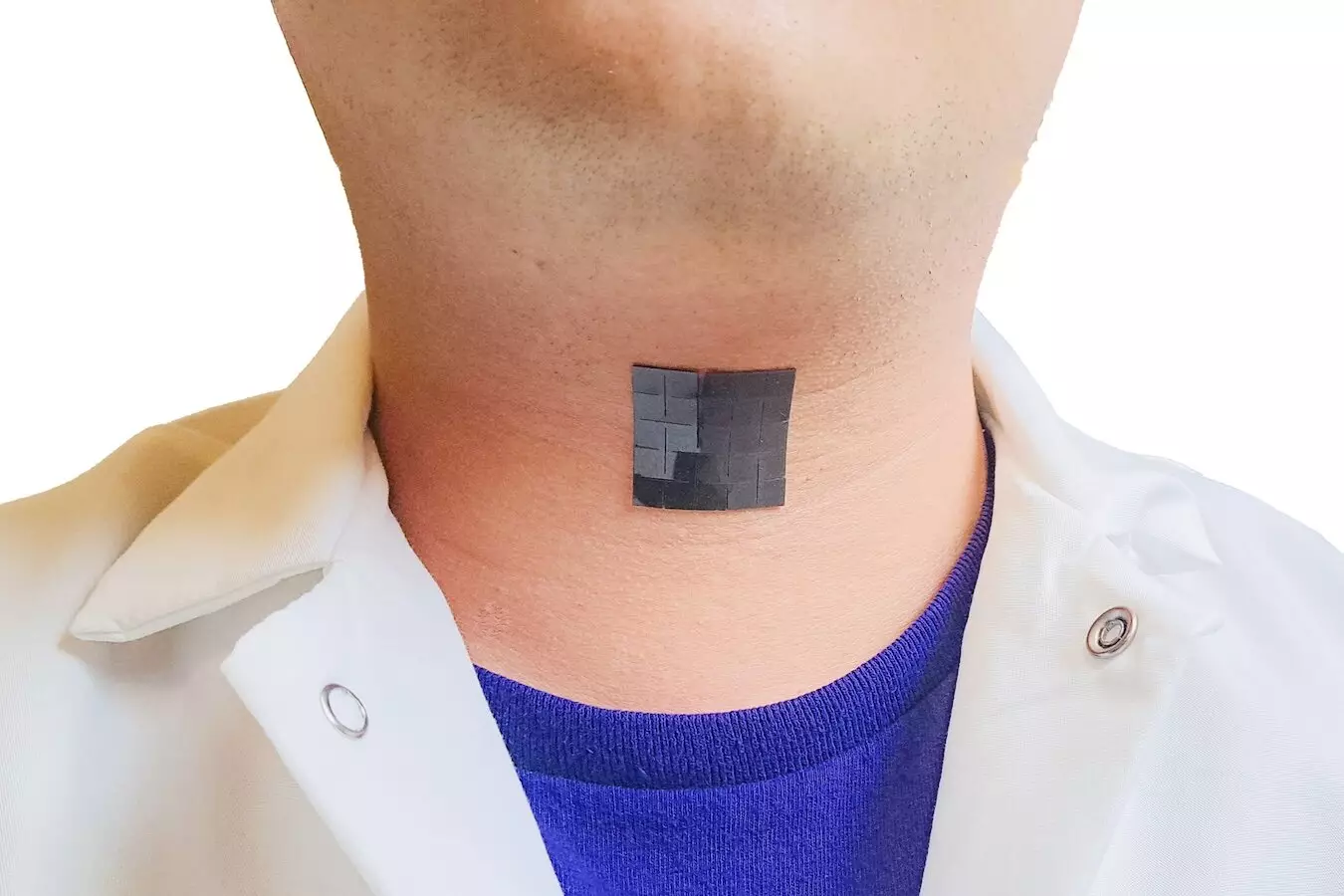Individuals with voice disorders due to various conditions, such as pathological vocal cord issues or recovering from laryngeal cancer surgeries, face challenges when it comes to speaking. However, a groundbreaking invention by a team of UCLA engineers offers hope for these individuals. The new bioelectric system, created by Jun Chen and his colleagues, aims to help people with dysfunctional vocal cords regain their ability to speak with the help of innovative technology and machine learning algorithms.
The device is a small, thin, and stretchy patch-like device that measures just over 1 square inch and can be attached to the skin outside the throat. It consists of two key components: a sensing component that detects muscle movements in the larynx and converts them into electrical signals, and an actuation component that translates these signals into audible speech. The device utilizes a soft magnetoelastic sensing mechanism to detect changes in the magnetic field caused by laryngeal muscle movements, providing high-fidelity electrical signals for accurate sensing.
Advantages of the Device
One of the key advantages of this new device is its non-invasive nature. Unlike existing solutions such as handheld electro-larynx devices or tracheoesophageal-puncture procedures, which can be inconvenient and uncomfortable, this wearable device offers a more comfortable and convenient option for individuals with voice disorders. The device can be easily adhered to the throat near the vocal cords using biocompatible tape and can be reused by reapplying the tape as needed.
Voice disorders are prevalent across various age groups and demographics, affecting nearly 30% of the population at some point in their lives. Traditional therapeutic approaches for voice recovery, such as surgical interventions and voice therapy, can be time-consuming and may require a significant period of postoperative voice rest. The new wearable device provides a novel solution for assisting patients in communicating effectively during the treatment and recovery periods for voice disorders.
In initial experiments, the device demonstrated impressive accuracy in translating laryngeal muscle movements into audible speech signals, with an overall prediction accuracy of 94.68%. Moving forward, the research team plans to expand the device’s vocabulary through machine learning and conduct further testing on individuals with speech disorders. The potential for enhancing communication and quality of life for people with voice disorders is significant, and ongoing research aims to maximize the device’s effectiveness and usability.
Overall, the development of this innovative voice device represents a significant breakthrough in the field of assistive technology for individuals with voice disorders. By combining advanced engineering principles with cutting-edge machine learning algorithms, the device offers new hope for improving communication and quality of life for those facing challenges with their voice. As research continues to expand and refine the capabilities of the device, the future looks promising for individuals seeking innovative solutions for voice restoration and communication assistance.


Leave a Reply